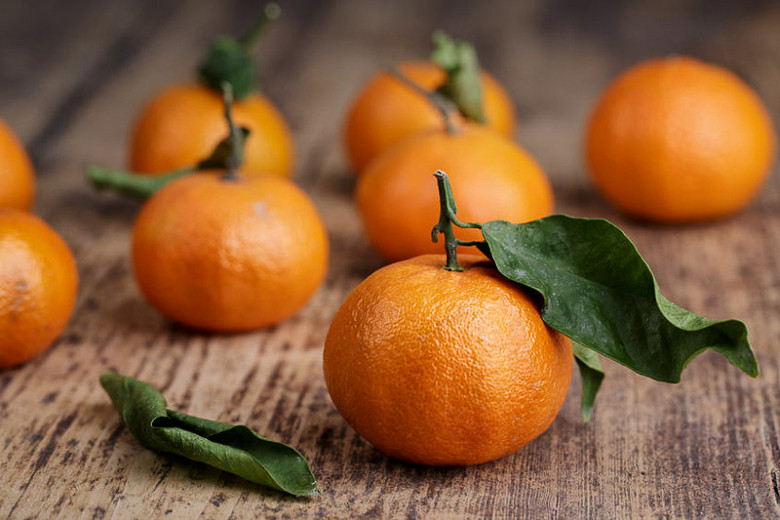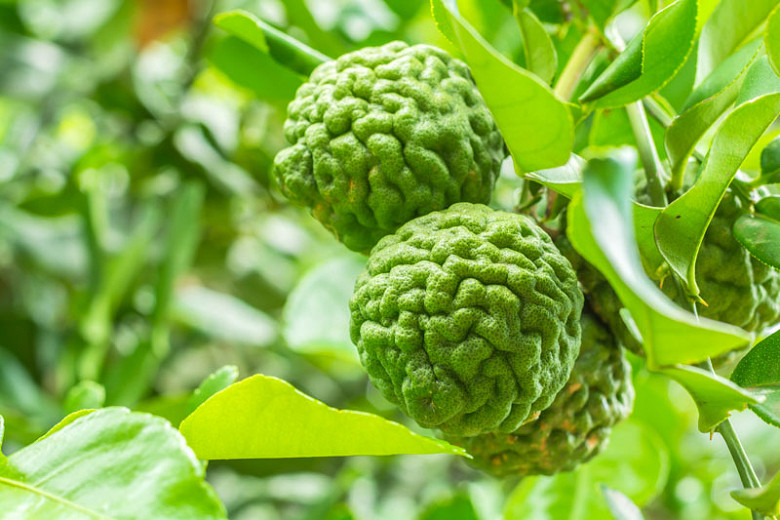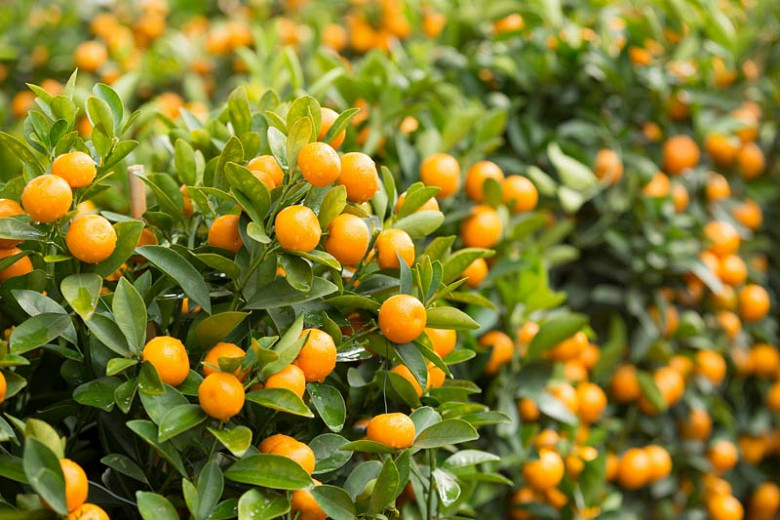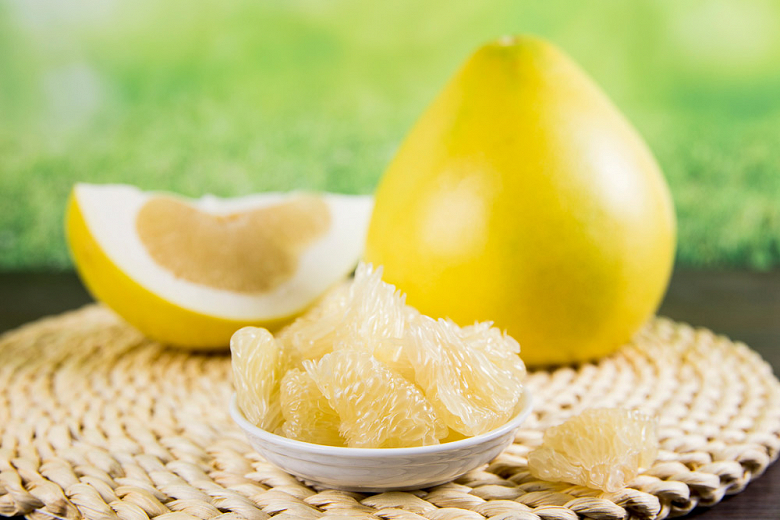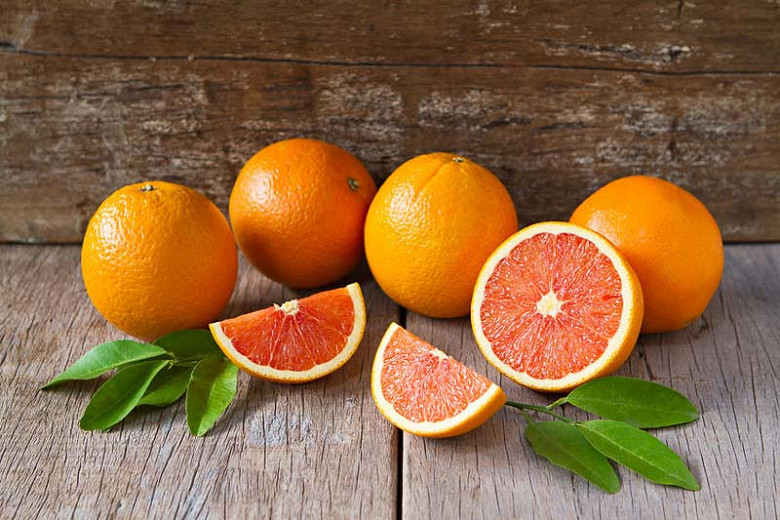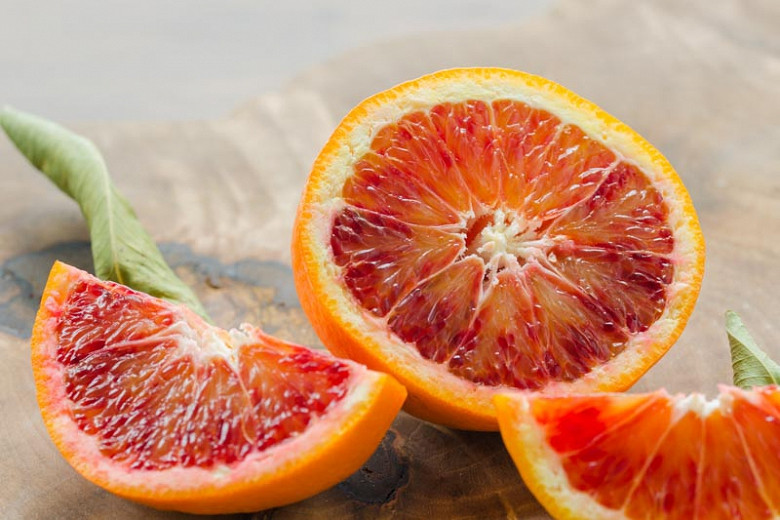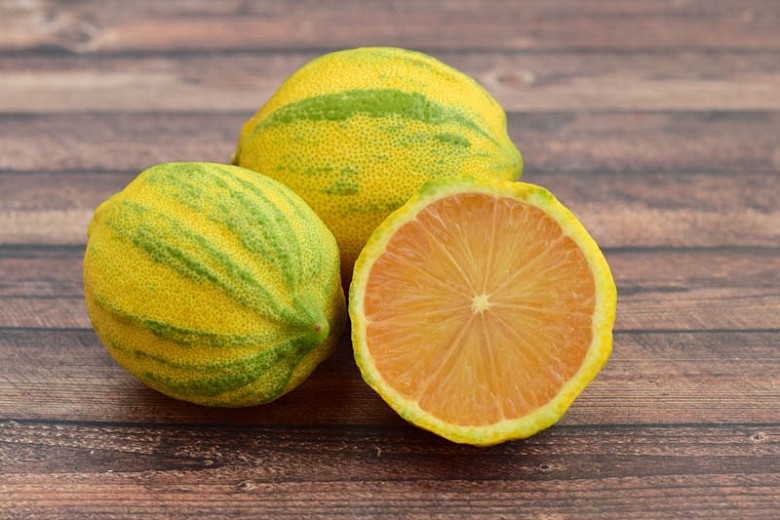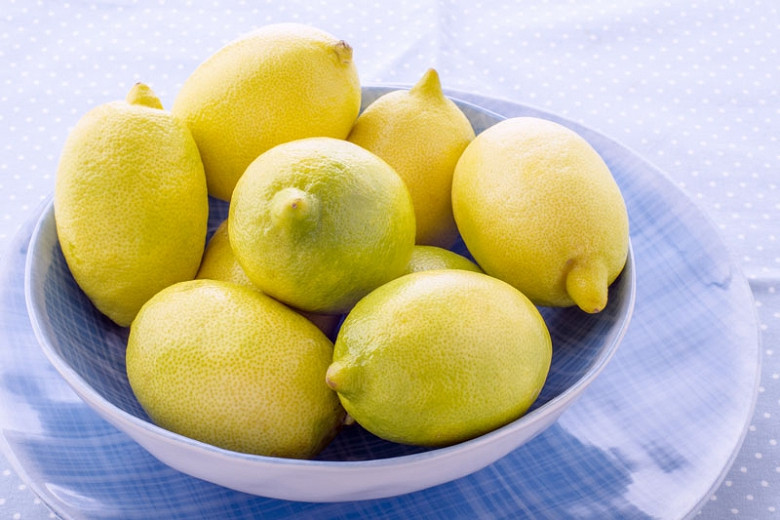Citrus clementina (Clementine)
Citrus clementina (Clementine) is a medium-sized, evergreen tree prized for its medium-small to medium fruit that is sweet, juicy, and easy to peel. They can very easily be broken apart into 8 to 14 different segments. The flesh is deep orange, tender and melting, aromatic, and less acid than oranges. The seeds are very few to medium in number, depending on cross-pollination. If self-pollinated, the fruit is usually seedless. If cross-pollinated, the fruits become seedy. Highly ornamental, the tree is of moderate vigor with a round and somewhat spreading growth habit. The fine-stemmed branchlets are willowy and nearly thornless. The dense foliage is highly variable in size, narrowly lanceolate, and dark green. Citrus clementina is a tangor, a citrus fruit hybrid between a willow-leaf mandarin orange (C. × deliciosa) and a sweet orange (C. × sinensis). It is a distinctive type of mandarin and is noted for having a lower heat requirement than other mandarins, which means the tolerance to fruit maturity and sensitivity to unfavorable conditions during the flowering and fruit-setting period is higher. Whether planted in the ground or grown in a container, this early fruiting tree will reward you in winter with an excellent crop of juicy fruit rich in fiber, calcium, potassium, and vitamin C.
- Grows up to 8-12 ft. tall (240-360 cm) and 4-6 ft. wide (120-180 cm).
- A full sun lover, this plant is easily grown in well-drained soils. Needs water regularly but cannot stand flooding or saturated soils. Water once every 1-2 weeks in spring and summer, once every 3 weeks in fall or winter.
- Thrives in warm climates and is hardy to 32 ºF (0ºC). Grow it indoors in a warm, sunny room and move it outdoors in late spring to a sunny spot protected from the wind.
- Prune to your desired size.
- No serious pest or disease issues.
- Propagate by semi-hardwood cuttings and grafting.
Requirements
| Hardiness | 8 – 11 |
|---|---|
| Climate Zones | 8, 9, 12, 13, 14, 15, 16, 17, 18, 19, 20, 21, 22, 23, 24, H1, H2 |
| Plant Type | Fruit, Trees |
| Plant Family | Citrus |
| Exposure | Full Sun |
| Season of Interest | Spring (Early,Mid,Late)Summer (Early,Mid,Late)FallWinter |
| Height | 8' – 12' (240cm – 3.6m) |
| Spread | 4' – 6' (120cm – 180cm) |
| Spacing | 72″ – 96″ (180cm – 240cm) |
| Water Needs | Average |
| Maintenance | Average |
| Soil Type | Clay, Loam, Sand |
| Soil pH | Acid, Alkaline, Neutral |
| Soil Drainage | Moist but Well-Drained |
| Characteristics | Fragrant, Showy, Evergreen, Fruit & Berries |
| Garden Uses | Beds and Borders, Patio and Containers |
| Garden Styles | Informal and Cottage, Mediterranean Garden |
